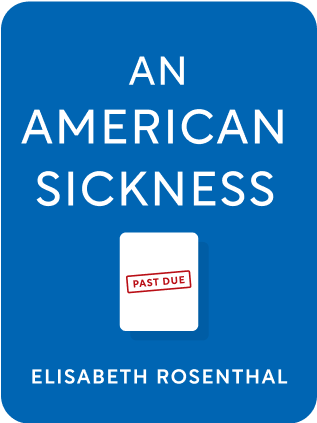

This article is an excerpt from the Shortform book guide to "An American Sickness" by Elisabeth Rosenthal. Shortform has the world's best summaries and analyses of books you should be reading.
Like this article? Sign up for a free trial here .
Why is healthcare so expensive in the U.S. compared to other countries? Why do American doctors make so much money?
There are several reasons why healthcare costs in America are so exorbitantly high. Medical school fees are only part of the problem—the most salient reason is that U.S. healthcare prices are determined by market forces. In most other countries, healthcare is at least partially under the control of the government.
To understand how this state of affairs has come to be, we need to go back to the middle of the 20th century.
Medical School Debt in the U.S.
To put it into perspective, primary care physicians in the United States make 40% more than Germans; orthopedic surgeons make 100% more. So, why is healthcare so expensive in the U.S.?
Part of the problem may be medical school debt. In the United States, medical school costs between $120k to $220k (with state schools at the lower range and private schools at the higher range), while it’s free or cheap in many other countries. Medical students graduate with a mean debt of $170k, some of it from undergrad.
This debt burden pushes some students into more lucrative specialties, like dermatology and ophthalmology, rather than what they would naturally prefer to practice.
But all this pay may not be enough. One medical student comments that doctors feel a “bizarre martyr complex” where they feel they’re working harder for less money than the rest of America. The author argues this is a symptom of the corporatization of healthcare—doctors are getting less satisfaction from patient care, so they’re looking for dollars to compensate for it.
Brief History of Doctor Pay
Before the 1950s, American patients were uninsured, paid doctors out of pocket, and were on an informal sliding scale in proportion to income. Doctors were comfortably middle class, but not wealthy.
In the middle of the 20th century, World War II and the ensuing employer-sponsored insurance, and Medicare Part B (with its essentially unconstrained reimbursements) led to large physician payments and a golden era of compensation. Why did Medicare pay so liberally? Since the medical profession was opposed to Medicare, this was part of a handshake deal to get Medicare passed—the government vowed not to interfere with the practice of medicine, if doctors could avoid opposing Medicare.
The reimbursement structure was based on retrospective “usual and customary” fees. “Usual” was defined as the average price of local providers in the preceding period, and “customary” was defined the % of the bill that was typically reimbursed (75-90%). The key point is that doctors had every incentive to raise their prices—if they raised their prices today, then they would get reimbursed for more tomorrow, since they had raised the average price of the procedure. During this time, costs exploded, and insurers paid liberally.
This was starting to be a clear problem, so in 1992, Congress and the American Medical Association created the resource-based relative value scale (RBRVS) using relative value units (RVUs). This was an attempt to standardize the amounts paid for medical procedures. The calculation included factors such as:
- The level of work and time spent by the doctor on the service
- The overhead in rendering the service
- The cost of training to perform the service
- Malpractice expenses involved
- All of this was multiplied by a conversion factor that varied by location and was adjusted annually
Furthermore, Medicare set a legal cap to payments to physicians. If a highly valued procedure was approved, other costs had to decrease. If total payments went up, the conversion factor had to decrease.
This system is important and widely used. Private insurers often peg what they’re willing to pay to Medicare’s RBRVS.
Compared to the “usual and customary” pricing, the intent of RVUs was to limit variation in medical prices and limit the growth of cost. However, this system incentivized procedures with more doctor time per intervention and more training required. If you’re wondering why there’s so much emphasis on specialty care in the United States, this is a big reason why. Expensive procedures like cardiac interventions and surgery are rewarded; less quantifiable practices, like complex neurology diagnoses, were punished.
(Shortform note: notably, RVUs are calibrated to effort, not to quality or outcomes. If a procedure costs more to provide, hospitals and doctors are paid more for it, even if there is a cheaper alternative that works better for the patient.)
According to the author, the median doctor income has risen over the past decade, even as overall real income nationwide has dropped.
Doctors Decide How Much They Get Paid
Because medical care constantly changes, the Medicare RVU system requires constant updating. Medicare assigned the responsibility of setting RVUs to the AMA. The author considers this as self-defeating as letting the American Petroleum Institute decide what BP and Shell can charge for gas. Doctors get to decide how much they get paid.
Three times a year, the AMA convenes the Relative Value Scale Update Committee (RUC), which operates like a senate serving 26 specialties. Otolaryngology gets 1 representative, general surgery gets 1 representative, and so on.
In these meetings, the different specialties deliberate on how much they should get paid for each procedure they do. As you might expect, there is plenty of politicking involved.
- Some of the factors used in determining RVUs are determined by survey—for instance, for the time component of RVUs, doctors are surveyed on how much time they spend on a procedure. In effect, this is like asking them if they’d like to be paid more.
- RUC reps will use their best paying procedures as a yardstick to boost other procedures.
- Medicare sets a legal cap to physician payments, so specialties have to negotiate among themselves for adjustments to compensation. If one specialty wins, another has to lose. The author argues that specialties with less political and aggressive reps, like pathology, get less favorable treatment at RUC.
The RUC minutes and votes are public, as shown here.
(Shortform note: Once set, these RVUs have systemic national implications, nudging doctors toward performing the higher compensated procedures.
If this system behaves like a typical economic system, perverse incentives are likely at play here. Imagine how a new medical device might be adopted.
- Device manufacturers game the metrics to get higher RVUs for new procedures, pushing more complicated procedures that need more training and longer procedure times.
- Manufacturers then influence doctors into supporting their device through sales meetings and discounts.
- Doctors push for higher RVUs at the RUC meeting.
- Higher RVUs get more doctors on board, which get more patients on board.
- Over time, the procedure becomes entrenched, despite evidence of no advantage in patient outcomes.
The AMA also earns directly from being in charge of the RVU system. They have copyrighted the billing CPT codes and charge license fees to anyone wishing to associate RVU values with CPT codes. This earns them $70 million a year!)
What to Do About Doctors’ Bills
- Ask questions about what the care will cost you, before you make your decision.
- Questions to ask a new doctor
- Is the practice a surgery center or owned by a hospital? Will facility fees be charged?
- Will you refer me only to providers in my insurance network?
- Can you send my testing to an in-network lab?
- What extra fees are there? Phone calls, annual fees?
- Will you see me in the hospital if I’m hospitalized? Can I reach you on weekends?
- Questions to ask during a visit
- How much will this treatment cost? Then when you get home, search online for a ballpark range for your local area.
- How will this test/exam/surgery change my treatment?
- If there’s no reasonable justification, pass on treatment.
- Where will this test/exam/surgery be performed, and how does that affect the price?
- Are you an owner of the place you’re referring me to?
- Are there cheaper alternatives that are equally good?
- Who else will be involved in treatment? Will I get a separate bill from another provider?
- If you find a surprisingly high price in your research, tell your doctor. She may not have known.
- Wait before getting treatment.
- Many symptoms resolve themselves.
- Unnecessary scans and tests get insignificant findings that might prompt unnecessary care.
- MRIs of middle-aged people can show bulging disks even if the patient feels no back pain. These don’t require treatment, but many get worried and do opt for unnecessary treatment.
Systemic Changes to Demand
- Demand more transparent pricing before care
- When given the choice between two differently priced treatments, most patients choose the cheaper one, even if insurance covers both.
- Doctors need to see prices when placing orders—this will make them avoid unnecessary tests and find alternatives for overpriced treatments. Hospitals should release their master list of prices to staff.
- Providers and insurers contractually cover their negotiated rates under a non-disclosure agreement. Some states have declared these illegal.
- Reform malpractice lawsuits
- 80% of doctors will be named in a malpractice lawsuit by the time they become 60 years old.
- Place limits on noneconomic damages.
- In California, there is a $250k limit for indirect damages like emotional suffering.
- Encourage arbitration instead of lawsuits. This will decrease time to payment and legal fees for both sides.
- Offer warranties and guarantees for treatments. Some surgery centers guarantee care of complications with no additional charge.
- Medical education
- Finance medical school to deter doctors from feeling like economic victims, which leads to overbilling for the sake of compensation.
- Give loan forgiveness for doctors who enter low-paying specialties or work in underserved areas.

———End of Preview———
Like what you just read? Read the rest of the world's best book summary and analysis of Elisabeth Rosenthal's "An American Sickness" at Shortform .
Here's what you'll find in our full An American Sickness summary :
- How U.S. healthcare got to the state it's in today
- Why it's so difficult to make any changes to the healthcare system
- What you can do to lower your personal healthcare costs






